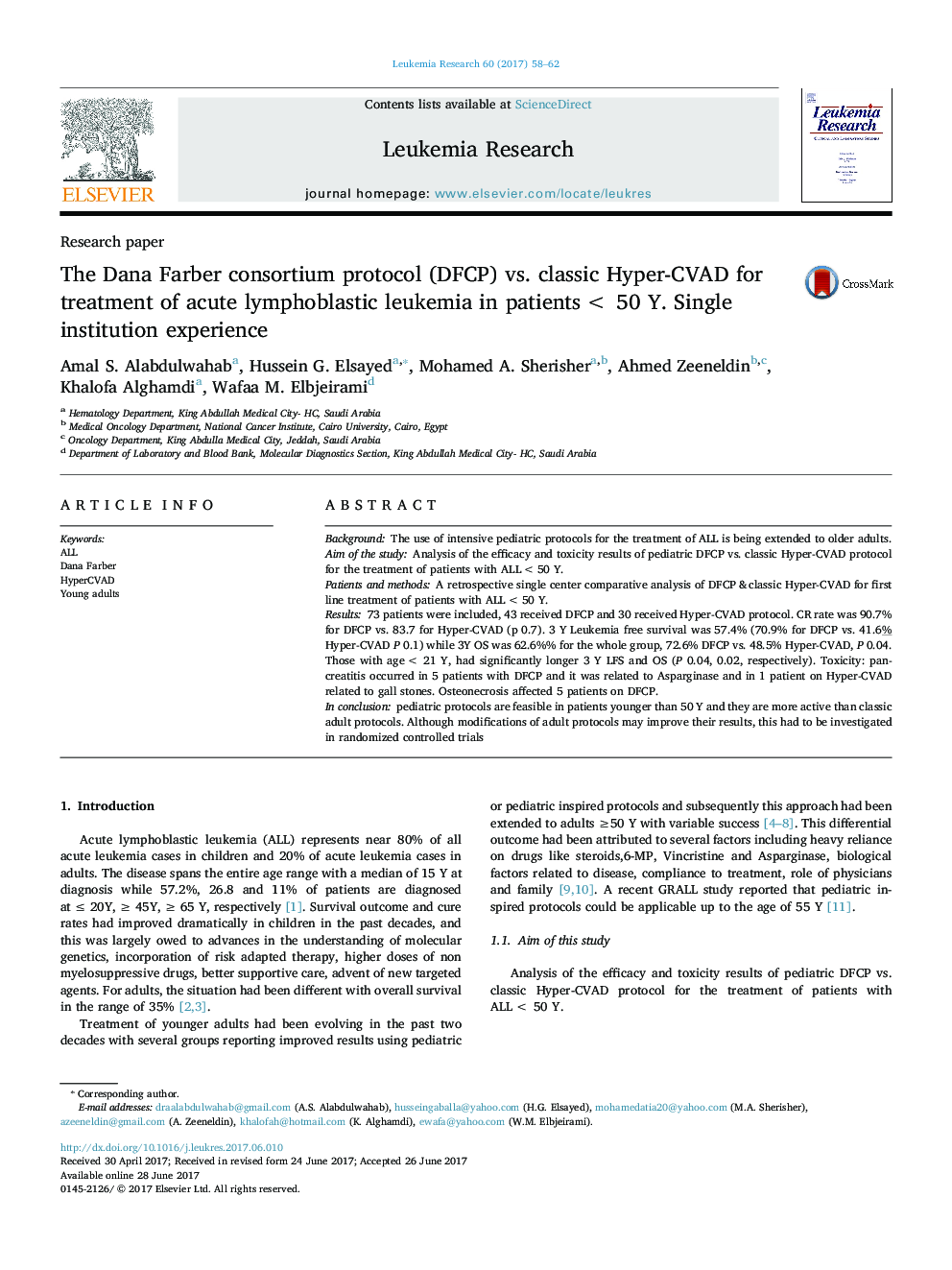| Article ID | Journal | Published Year | Pages | File Type |
|---|---|---|---|---|
| 5527720 | Leukemia Research | 2017 | 5 Pages |
â¢Pediatric protocols are more active than adult protocols in patients < 50 Y.â¢Strategies to reduce toxicity without compromising cure rate are required.â¢Modifications of adult protocols might add to their efficacy.â¢Genetic mutations are discovered recently which has prognostic/predictive value.â¢Prospective randomized trials are required with preplanned treatment at relapse.
BackgroundThe use of intensive pediatric protocols for the treatment of ALL is being extended to older adults.Aim of the studyAnalysis of the efficacy and toxicity results of pediatric DFCP vs. classic Hyper-CVAD protocol for the treatment of patients with ALL < 50 Y.Patients and methodsA retrospective single center comparative analysis of DFCP & classic Hyper-CVAD for first line treatment of patients with ALL < 50 Y.Results73 patients were included, 43 received DFCP and 30 received Hyper-CVAD protocol. CR rate was 90.7% for DFCP vs. 83.7 for Hyper-CVAD (p 0.7). 3 Y Leukemia free survival was 57.4% (70.9% for DFCP vs. 41.6% Hyper-CVAD P 0.1) while 3Y OS was 62.6%% for the whole group, 72.6% DFCP vs. 48.5% Hyper-CVAD, P 0.04. Those with age <Â 21 Y, had significantly longer 3 Y LFS and OS (P 0.04, 0.02, respectively). Toxicity: pancreatitis occurred in 5 patients with DFCP and it was related to Asparginase and in 1 patient on Hyper-CVAD related to gall stones. Osteonecrosis affected 5 patients on DFCP.In conclusionpediatric protocols are feasible in patients younger than 50 Y and they are more active than classic adult protocols. Although modifications of adult protocols may improve their results, this had to be investigated in randomized controlled trials
